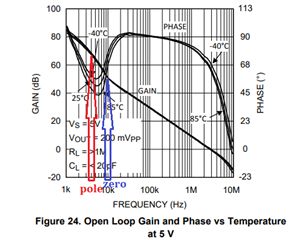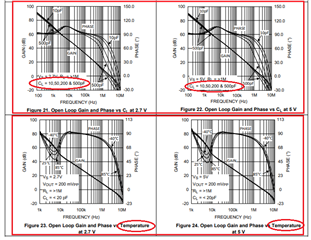Hello,
In the LMP2012 datasheet (SNOSA71L –OCTOBER 2004–REVISED SEPTEMBER 2015), there are several open loop gain curves.
Each curve presents the OLG as a function of a special parameter (RL, CL, Vs).
All the curves look very similar except the "figure 23 - open loop gain and phase vs temperature".
I don't understand why there is a big phase dip in that curve ?
Could you explain?
Moreover, I saw Vout = 200mVpp on figure 23.
Is it different for others curves?
Is the testing method different?
Thanks
Simon





